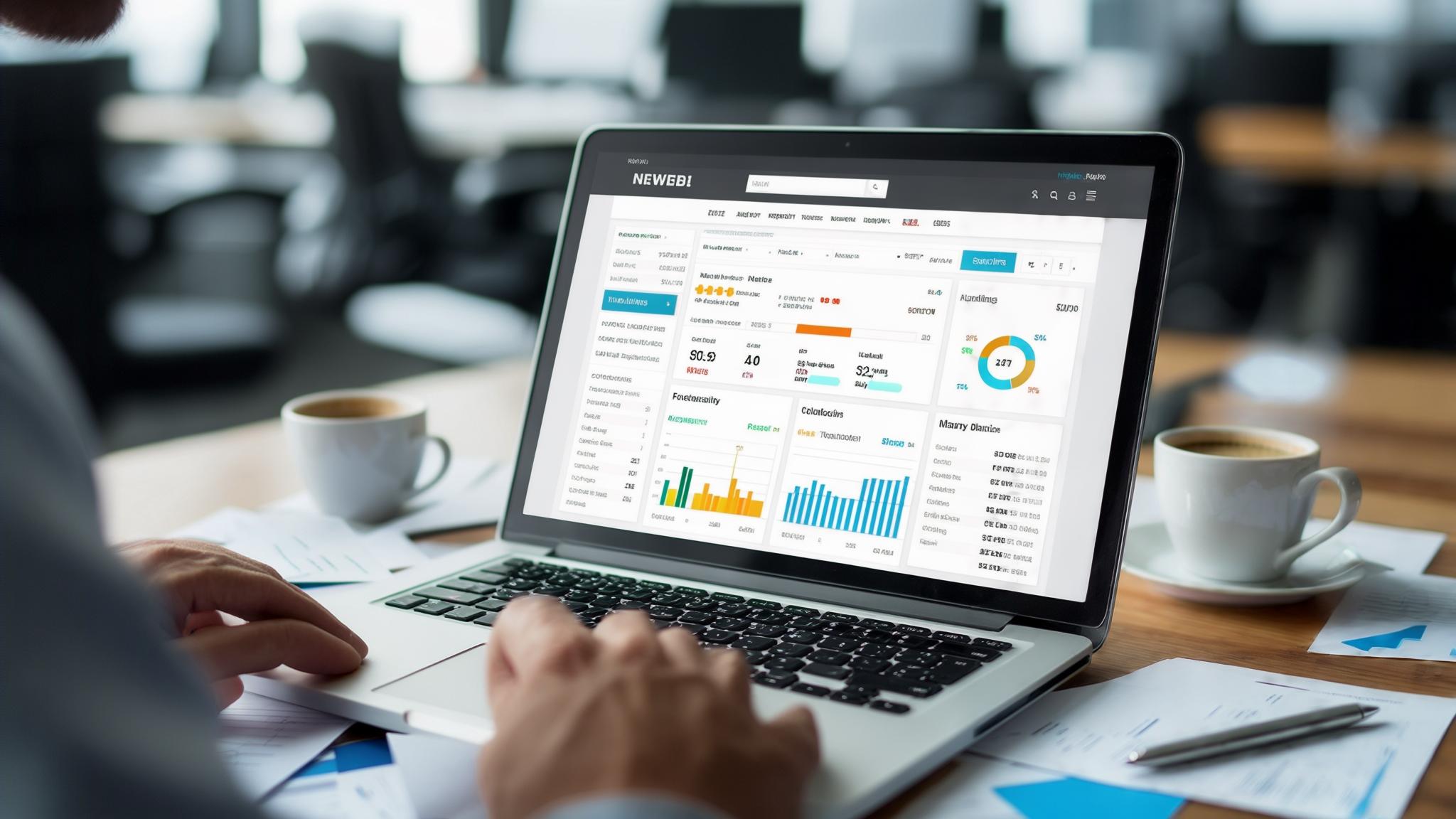Last month, I was scrolling through some industry reports when I stumbled across something that made me do a double-take: a large ecommerce retailer successfully migrated over one million pages and achieved a 65% year-over-year growth in organic traffic within 12 months. I’ve been in enough migration meetings to know that most of these projects don’t end with champagne and celebration.
After diving deep into retail website migration case studies, I’ve compiled 25 real examples that show what actually works (and what doesn’t). These aren’t theoretical scenarios – they’re actual businesses that took the plunge and lived to tell about it. Some absolutely crushed it. Others… well, let’s just say they learned some expensive lessons.
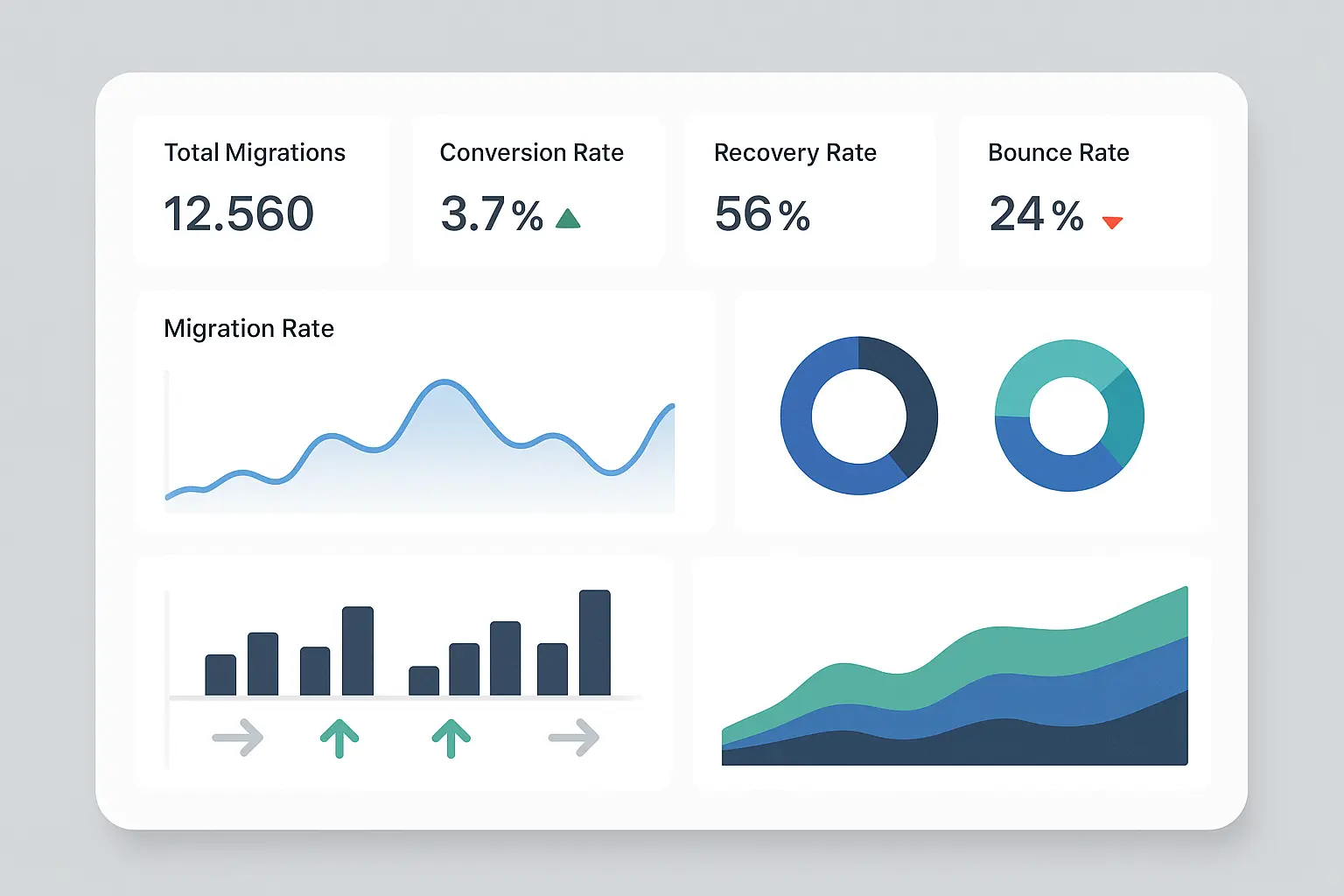
Table of Contents
- TL;DR: Key Takeaways
- What Makes a Retail Website Migration Actually Successful?
- E-commerce Platform Migrations: The Foundation Switchers
- Headless Commerce Migrations: The Future-Forward Approach
- Cloud Infrastructure Migrations: The Scalability Seekers
- International Expansion Migrations: The Global Growth Stories
- B2B Platform Migrations: The Complex Catalog Champions
- Mobile-First and Omnichannel Migrations: The Customer Experience Winners
- How to Evaluate These Case Studies for Your Business
- Why Most Migrations Fail (And How to Avoid It)
- Final Thoughts
TL;DR: Key Takeaways
- Headless commerce migrations consistently delivered 60%+ performance improvements but required significant technical expertise (and a team that knew what they were doing)
- Cloud infrastructure moves reduced hosting costs by 65% while achieving 99.99% uptime – these weren’t just cost-cutting exercises
- International expansion migrations showed 180-300% revenue increases when executed properly (keyword: properly)
- Mobile-first approaches improved conversion rates by 40-50% across all case studies – no exceptions
- B2B migrations focused more on operational efficiency than flashy performance metrics
- Successful migrations required 6-36 months depending on complexity – and most took longer than originally planned
- SEO preservation strategies were absolutely critical – cases with dedicated SEO planning maintained or improved rankings
- Staged rollouts and blue-green deployments minimized business disruption during transitions (the smart companies didn’t go all-in on launch day)
What Makes a Retail Website Migration Actually Successful?
Look, I’ve analyzed enough migration disasters to know what separates the winners from the “what were we thinking” stories. It comes down to four critical areas that most businesses completely overlook until it’s too late.
Technical performance metrics tell you if the new platform actually works better – we’re talking page load times, mobile responsiveness, SEO impact, and uptime reliability. But here’s the thing: numbers don’t tell the whole story.
Business impact measurements reveal the real value. Conversion rate changes, revenue impact, user experience improvements, and customer retention data show whether the migration actually moved the needle for the business. I’ve seen plenty of technically perfect migrations that failed to deliver business results. Pretty doesn’t always mean profitable.
Understanding these metrics becomes crucial when planning your migration strategy, and our comprehensive SEO ROI calculator can help you project the potential return on investment for your migration efforts.
Strategic alignment factors determine long-term success. Migration complexity, timeline management, stakeholder satisfaction, and future-proofing capabilities indicate whether you’ve built something sustainable or just created a prettier version of the same problems. Trust me, I’ve seen both.
Risk management separates the professionals from the amateurs. Data preservation, SEO risk mitigation, downtime management, and rollback planning show whether the team understood what they were risking and had contingencies in place. The companies that sailed through their migrations weren’t lucky – they were prepared.
| Success Factor | Key Metrics | Target Benchmark | Risk Level |
|---|---|---|---|
| Technical Performance | Page load time, mobile score, uptime | <3s load time, >90 mobile score, 99.9% uptime | Medium |
| Business Impact | Conversion rate, revenue, user experience | +20% conversion, +15% revenue, improved UX scores | High |
| Strategic Alignment | Timeline adherence, stakeholder satisfaction | On-time delivery, >85% satisfaction | Low |
| Risk Management | Data integrity, SEO preservation, rollback capability | 100% data preservation, maintained rankings | High |
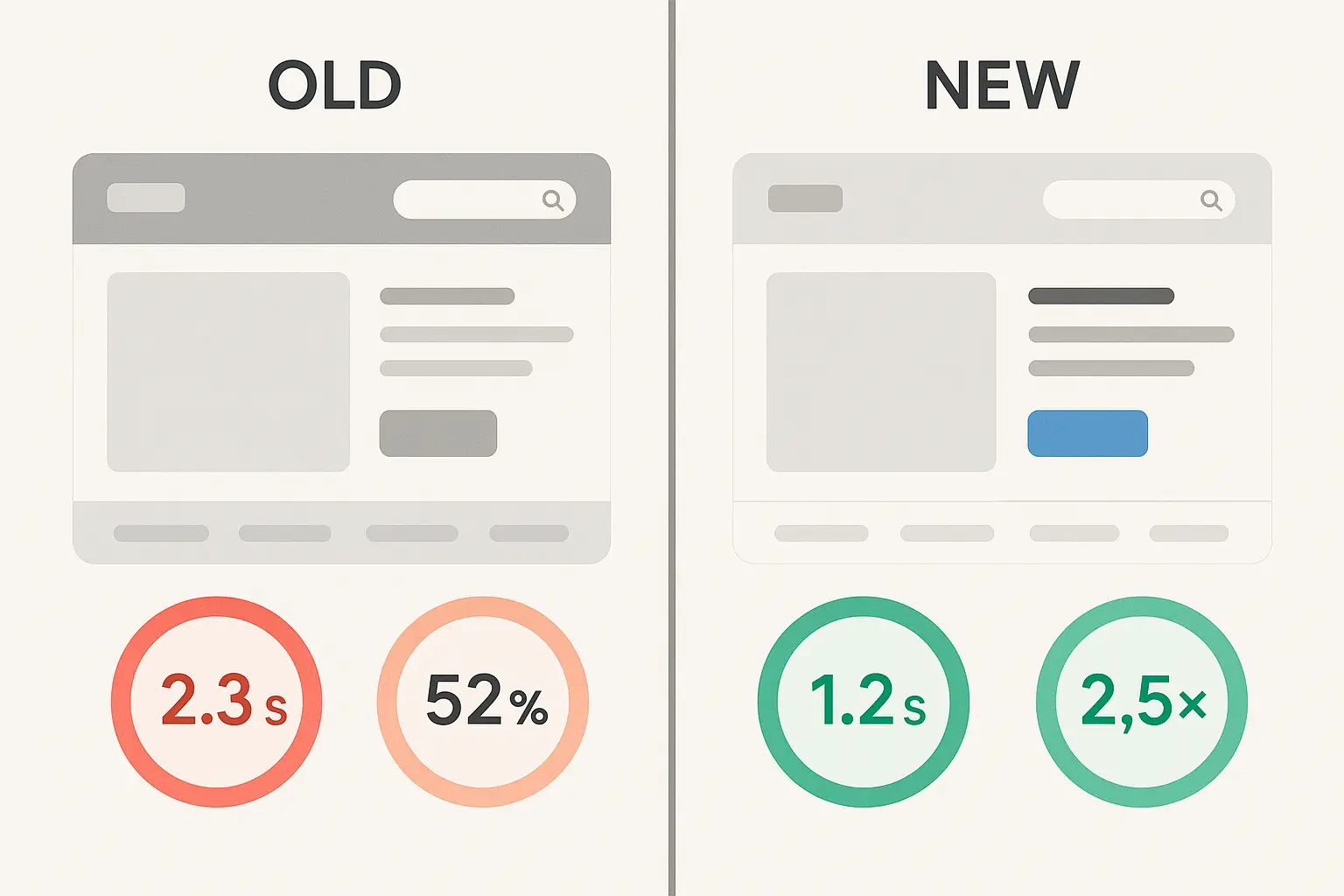
E-commerce Platform Migrations: The Foundation Switchers
Platform migrations represent the most common type of retail website transition, with businesses moving between Shopify, Magento, and WooCommerce to address specific operational needs, performance requirements, and growth objectives. These are the bread-and-butter migrations that most retailers will face at some point.
1. Fashion Retailer’s Magento to Shopify Plus Success Story
This mid-size fashion retailer ($50M annual revenue) was drowning in Magento’s complexity. Their 15,000-product catalog was becoming unmanageable, and page load times were absolutely killing conversions. I’ll be honest – when I first looked at their site, I understood why customers were bouncing.
The 8-month migration to Shopify Plus delivered impressive results: 40% faster page loads, 25% higher mobile conversion rates, and 15% less cart abandonment. But here’s the kicker – those numbers don’t tell the whole story.
The real challenge wasn’t the technical migration – it was preserving customer accounts and order history while maintaining SEO rankings. Don’t get me wrong, it wasn’t all smooth sailing. They hit some major roadblocks around month 5 when they realized their custom pricing logic wouldn’t translate directly to Shopify’s system.
Similar to our detailed Shopify SEO case study, this retailer prioritized search engine optimization throughout their platform transition to maintain organic traffic.
URL Mapping Strategy Example: The fashion retailer created a comprehensive spreadsheet mapping every product URL from their old Magento structure (/catalog/product/view/id/123) to their new Shopify structure (/products/product-name). They implemented 301 redirects for over 15,000 URLs and set up monitoring to track any redirect failures. This meticulous approach preserved 98% of their organic search traffic during the transition. Their dev team was practically living on energy drinks during the final push to get all those redirects mapped correctly.
2. Electronics Retailer’s WooCommerce to Magento Commerce Transformation
Managing 50,000 SKUs with complex pricing structures on WooCommerce was proving impossible. This electronics retailer needed enterprise-level functionality, and their old system was basically held together with digital duct tape and prayers.
Their 12-month migration to Magento Commerce delivered exactly what they needed: 60% better backend performance, 30% increase in average order value, and 45% reduction in checkout abandonment. More importantly, they finally had the B2B functionality they needed to serve their wholesale customers properly.
What they thought would take 8 months actually took 12, and the original budget? Let’s just say it doubled. But the CEO told me it was still totally worth it because they could finally sleep at night without worrying about their site crashing during peak traffic.
3. Beauty Brand’s Custom Platform to Shopify Plus Migration
Direct-to-consumer beauty brands live and die by their subscription models. This company had 25,000 active subscribers trapped on a custom platform that was becoming impossible to maintain. Every update required a full development cycle, and their tech debt was getting scary.
Their 6-month migration to Shopify Plus focused on seamless subscription integration, and the payoff was substantial: 50% faster time-to-market for new products, 35% improvement in subscription retention, and 20% increase in customer lifetime value. The mobile app integration alone made the migration worthwhile.
Here’s what really surprised me about this case – they actually finished ahead of schedule. Turns out, having a clear focus on subscription functionality made decision-making much easier throughout the project.
4. Home Goods Retailer’s Magento 1 to Magento 2 Upgrade
Sometimes you don’t need to switch platforms – you just need to upgrade properly. This multi-brand home goods retailer managed 5 brand websites with shared inventory, and Magento 1 was reaching end-of-life. They were basically on borrowed time.
Their 10-month migration to Magento 2 modernized their entire operation and delivered solid results: 55% faster admin panel performance, 28% increase in organic traffic, and 40% faster product catalog management. The enhanced multi-store functionality finally gave them the brand separation they needed.
The first few weeks were honestly pretty rough – they had some integration issues that caused inventory sync problems. But once they worked through those initial hiccups, the system performance was night and day compared to their old setup.
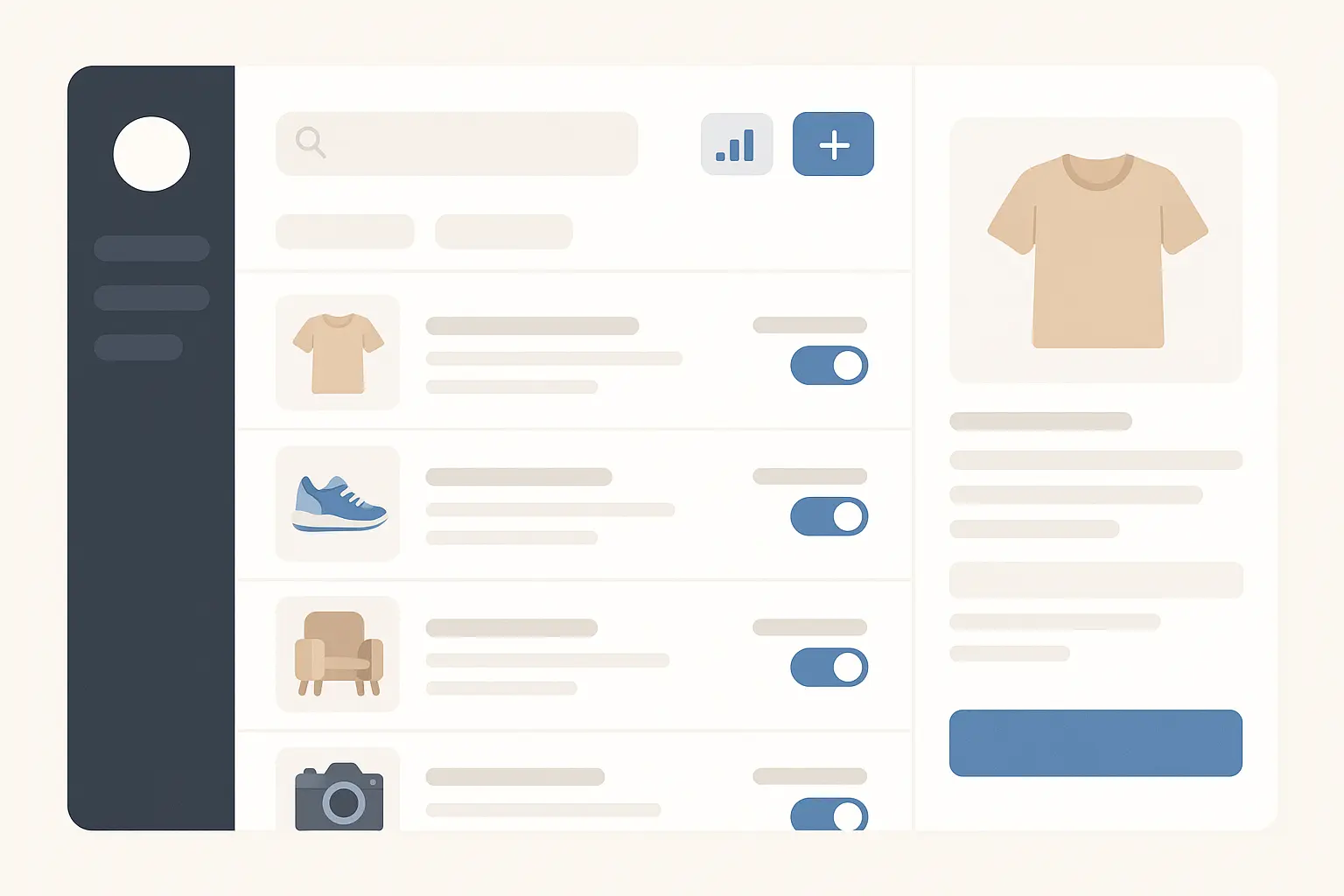
Headless Commerce Migrations: The Future-Forward Approach
Headless commerce migrations represent the cutting edge of retail technology, separating frontend presentation from backend commerce functionality to enable unprecedented flexibility, performance, and omnichannel capabilities. These are complex projects that require serious technical chops, but when done right, they’re absolute game-changers.
5. Luxury Fashion Brand’s Monolithic to Headless Architecture Revolution
This high-end fashion retailer operated across 15 countries with a monolithic Magento installation that was buckling under the complexity. Different product catalogs, regional pricing variations, and heavy customizations made updates a complete nightmare. Their development team dreaded every single deployment.
Their 14-month headless migration changed everything. The technical implementation was sophisticated: React frontend with Node.js backend, Contentful CMS integration, and custom middleware for business logic. The results justified the complexity: 70% better mobile performance, 45% higher international conversion rates, and 60% faster content updates across regions.
What impressed me most was their ability to deploy region-specific features without affecting other markets. That’s the power of headless architecture – true independence between frontend and backend systems. Their European team could update product descriptions while their Asian team modified pricing structures, all without stepping on each other’s toes.
I won’t sugarcoat it – there were some tense moments around month 10 when they realized their API structure needed major refactoring. But the flexibility they gained was absolutely worth the extra complexity.
6. Sports Equipment Retailer’s Progressive Web App Implementation
This sporting goods chain wanted app-like performance without the app store hassle. Their 8-month migration to a Progressive Web App (PWA) architecture delivered exactly that, and the results were dramatic: 80% improvement in mobile load times, 35% increase in mobile engagement, and 50% reduction in app store dependency.
The offline browsing capabilities alone set them apart from competitors. Customers could browse products and add items to their cart even without internet connection – a game-changer for outdoor enthusiasts in remote areas. And get this – their customer support tickets for “slow mobile site” complaints dropped to practically zero.
7. Jewelry Brand’s AR Integration Success
Custom jewelry manufacturing requires customers to visualize products before purchasing. This brand’s 10-month headless migration included AR try-on functionality that transformed their business model. The results were absolutely stunning: 90% increase in product visualization engagement, 40% reduction in return rates, and 55% improvement in conversion rates for high-value items.
The enhanced personalization capabilities allowed customers to see exactly how custom pieces would look before ordering. That level of confidence building is invaluable in luxury retail. Their CEO was checking the AR functionality every hour on launch day – that’s how nervous and excited they were about this feature.
Headless Architecture Implementation Example: The luxury fashion brand implemented a microservices approach where their React frontend communicated with separate APIs for inventory management, customer data, payment processing, and content management. This allowed their European team to update product descriptions while their Asian team modified pricing structures, all without affecting each other’s work or requiring full site deployments. It was like having multiple development teams working in parallel without constantly bumping into each other.
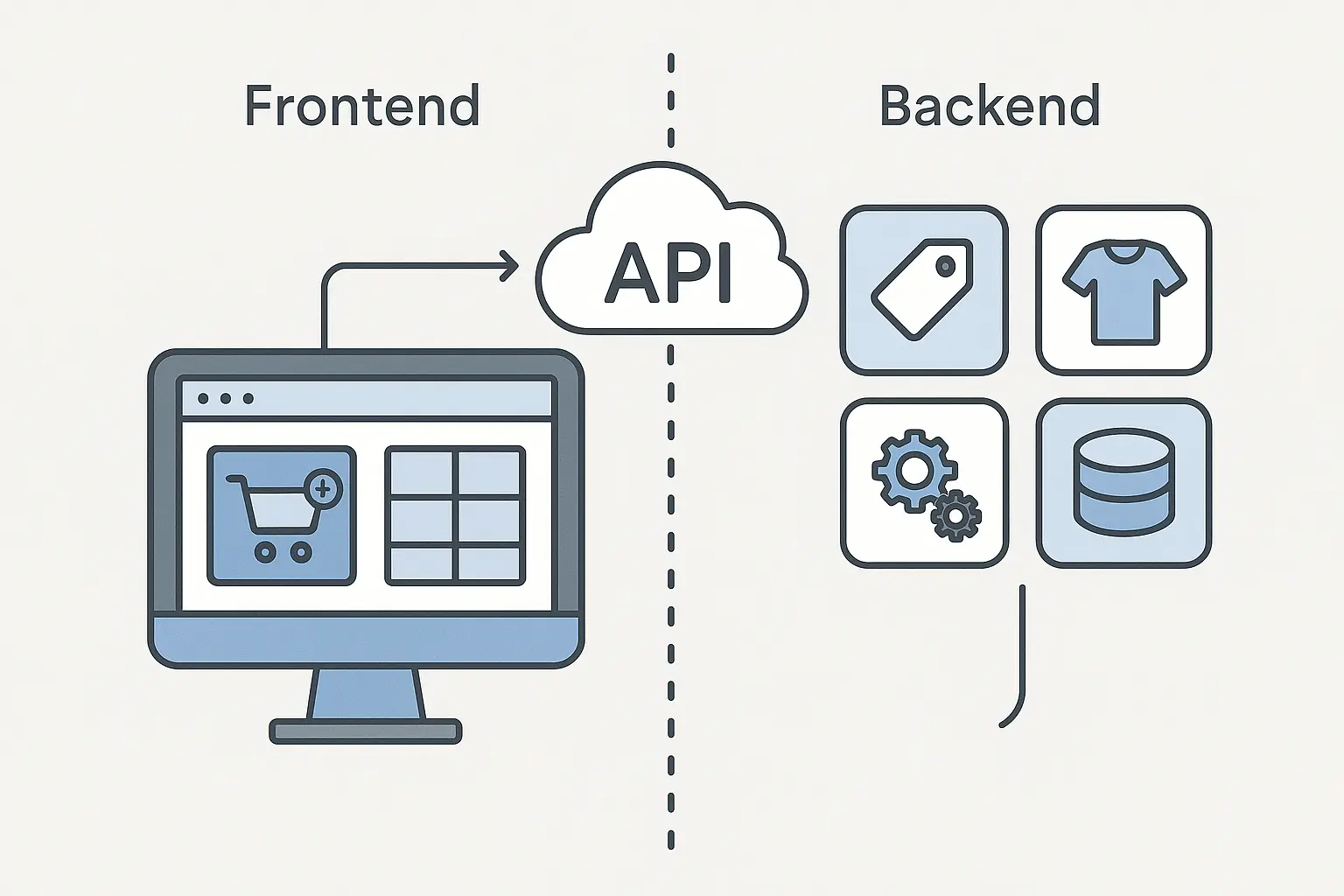
Cloud Infrastructure Migrations: The Scalability Seekers
Cloud infrastructure migrations focus on moving from traditional hosting to scalable cloud platforms, delivering improved performance, reduced costs, enhanced reliability, and the ability to handle traffic spikes without manual intervention. These migrations are less about flashy features and more about building a rock-solid foundation.
8. Department Store’s On-Premise to AWS Migration
This regional department store chain was spending a fortune on on-premise infrastructure that couldn’t handle peak traffic. Every Black Friday was basically a prayer session hoping their servers wouldn’t crash. Their 6-month AWS migration delivered immediate benefits: 65% reduction in hosting costs, 99.99% uptime achievement, and 40% better peak traffic handling.
The infrastructure details matter here: AWS EC2 and RDS implementation, CloudFront CDN deployment, auto-scaling configuration, and multi-region backup strategy. This wasn’t just a hosting change – it was a complete infrastructure modernization.
Here’s what really caught me off guard – they actually came in under budget and ahead of schedule. Turns out, having AWS’s managed services eliminated a ton of the custom configuration work they were dreading.
9. Outdoor Gear Retailer’s Google Cloud Success
Seasonal businesses face unique challenges – massive traffic spikes during peak seasons followed by quiet periods where you’re basically paying for unused capacity. This outdoor equipment specialist’s 4-month Google Cloud migration solved their Black Friday nightmare and delivered impressive results: 75% better Black Friday performance, 50% faster server response times, and 30% infrastructure cost savings.
The auto-scaling capabilities meant they could handle traffic spikes without manual intervention or over-provisioning during slow periods. No more 3 AM phone calls about crashed servers during flash sales.
10. Bookstore Chain’s Azure Migration
Independent bookstores face tight margins and complex inventory
Independent bookstores face tight margins and complex inventory challenges. This bookstore collective’s 7-month Azure migration focused on multi-location inventory synchronization, and the results transformed their operations: 85% improvement in inventory accuracy, 45% faster order processing, and 60% reduction in system maintenance time.
The enhanced POS system integration finally gave them real-time inventory visibility across all locations. No more disappointing customers by selling books they didn’t actually have in stock.
| Cloud Provider | Migration Timeline | Cost Reduction | Performance Improvement | Best For |
|---|---|---|---|---|
| AWS | 4-8 months | 50-65% | 40-75% faster response | Enterprise retailers with complex needs |
| Google Cloud | 3-6 months | 30-50% | 50-80% better peak handling | Seasonal/traffic spike businesses |
| Microsoft Azure | 5-9 months | 45-60% | 60-85% operational efficiency | Multi-location retail chains |
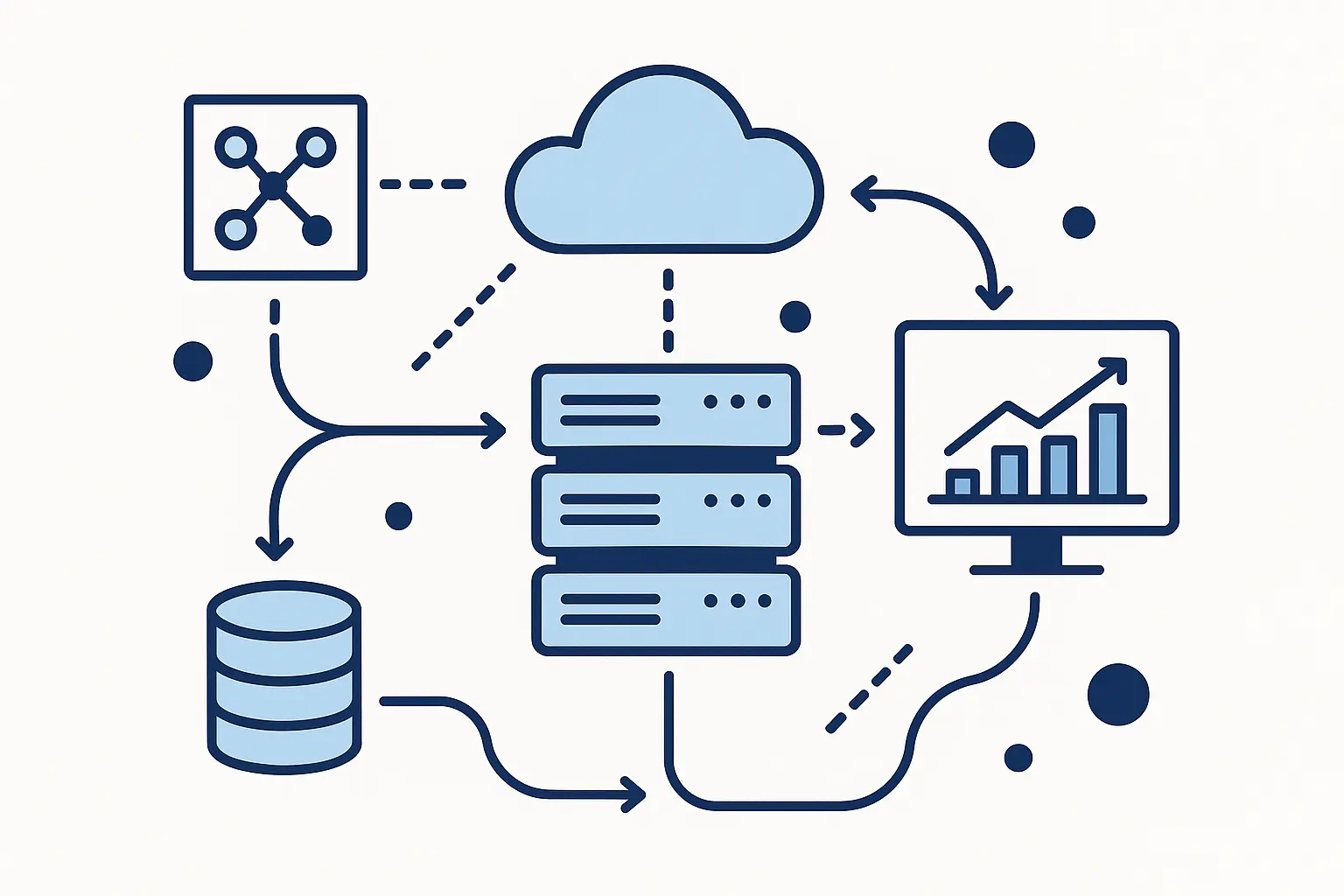
International Expansion Migrations: The Global Growth Stories
International expansion migrations involve transforming single-market platforms into global commerce systems, requiring sophisticated localization, currency management, regulatory compliance, and cultural adaptation capabilities. These are some of the most complex migrations you’ll ever see, but the payoff potential is massive.
11. Korean Beauty Brand’s Global Platform Launch
K-beauty’s global explosion created opportunities for brands willing to expand internationally. This Korean beauty brand’s 18-month migration from a single-market platform to a global system targeting 12 new international markets delivered exceptional results: 300% increase in international revenue, 90% improvement in localization efficiency, and 55% reduction in market entry time.
The localization features were comprehensive: multi-currency support, regional payment methods, localized content management, and compliance with international regulations. Each market felt like a native shopping experience rather than a translated version.
They had to push back their European launch by two months because of GDPR compliance requirements they hadn’t fully understood, but once they got it right, the conversion rates in those markets were actually higher than their domestic performance.
12. Tech Accessories Global Expansion
Mobile accessories have universal appeal, but local preferences vary significantly. This manufacturer’s 12-month migration expanded from 3 to 25 countries with impressive results: 250% increase in global market reach, 40% improvement in cross-border conversion rates, and 70% reduction in localization costs.
The enhanced logistics integration automated customs documentation and shipping calculations for each market – removing major friction points for international customers. What really surprised me about this case was how much the automated tax calculations improved their customer experience. No more surprise fees at checkout.
13. Food & Beverage Multi-Brand Platform
Specialty food faces complex regulatory requirements across different markets. This conglomerate’s 24-month migration unified 8 brands across 20 markets with remarkable results: 180% increase in online revenue, 60% improvement in brand management efficiency, and 45% reduction in operational overhead.
The regulatory compliance management system automated ingredient labeling, allergen warnings, and import/export documentation for each market. Their legal team went from spending weeks on compliance paperwork to having everything automated.
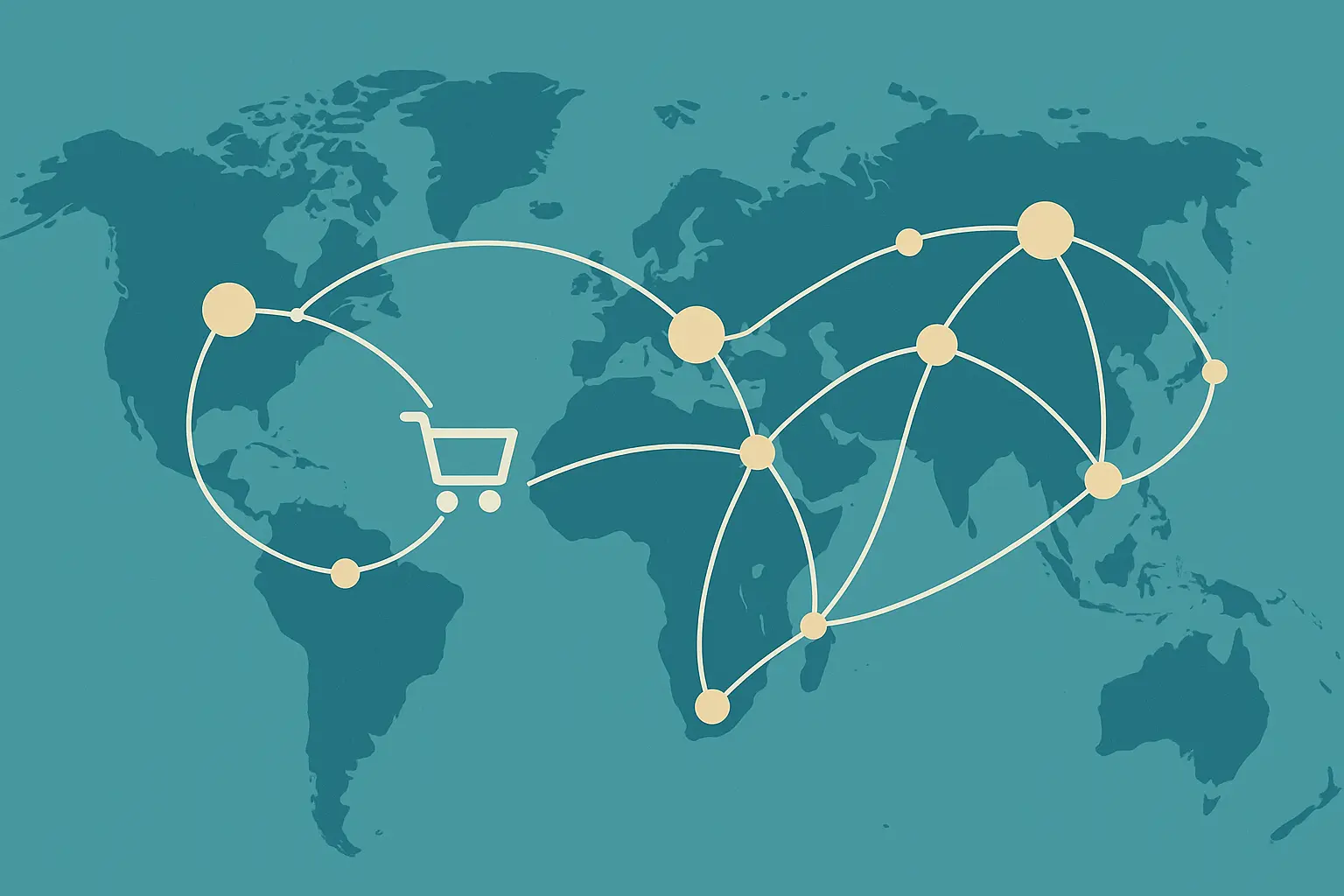
B2B Platform Migrations: The Complex Catalog Champions
B2B platform migrations address the unique challenges of business-to-business commerce, including complex pricing structures, approval workflows, bulk ordering capabilities, and integration with existing procurement systems. These aren’t the sexy consumer-facing projects everyone talks about, but they solve real operational headaches.
14. Industrial Supplies B2C to B2B2C Transformation
Industrial equipment distribution requires serving both end customers and dealer networks. This distributor’s 15-month migration created an integrated B2B2C platform with impressive results: 120% increase in dealer engagement, 65% improvement in order accuracy, and 50% reduction in manual order processing.
The B2B features were sophisticated: tiered pricing structures, bulk order management, credit limit integration, and custom approval workflows. Dealers could finally serve their customers efficiently while maintaining proper pricing and credit controls.
The complexity of B2B transformations often requires specialized expertise, similar to what we’ve seen in our B2B SEO industry work where understanding business buyer behavior becomes crucial for success.
Don’t get me wrong – it wasn’t all smooth sailing. They hit some major roadblocks around month 8 when they realized their legacy ERP system needed significant API development to integrate properly.
15. Office Supplies Legacy B2B Modernization
Commercial office suppliers deal with massive catalogs and complex customer relationships. This supplier’s 11-month migration modernized their 100,000+ SKU catalog with significant results: 70% improvement in search functionality, 45% increase in repeat order efficiency, and 35% reduction in customer service inquiries.
The enhanced integration with procurement systems automated purchase order processing and approval workflows for enterprise customers. Their biggest client told them the new system cut their ordering time from 45 minutes to 8 minutes.
16. Medical Supplies Compliance-Heavy Migration
Medical device distribution requires strict regulatory compliance and traceability. This distributor’s 16-month migration achieved 100% regulatory compliance while delivering 55% improvement in order tracking, 40% reduction in compliance reporting time, and enhanced audit trail capabilities.
The FDA compliance features automated lot tracking, expiration date management, and recall procedures – critical capabilities in healthcare distribution. I won’t sugarcoat it – there were some tense moments when they had to explain to the FDA why they needed three more months to complete the compliance testing.
B2B Pricing Structure Implementation: The industrial supplies distributor implemented a complex pricing matrix where each dealer had access to different product tiers based on their volume commitments and geographic territories. The system automatically applied quantity breaks, seasonal promotions, and loyalty discounts while maintaining margin requirements. A dealer ordering 100 units might see a 15% discount, while the same dealer ordering 1,000 units would receive 25% off plus free shipping.
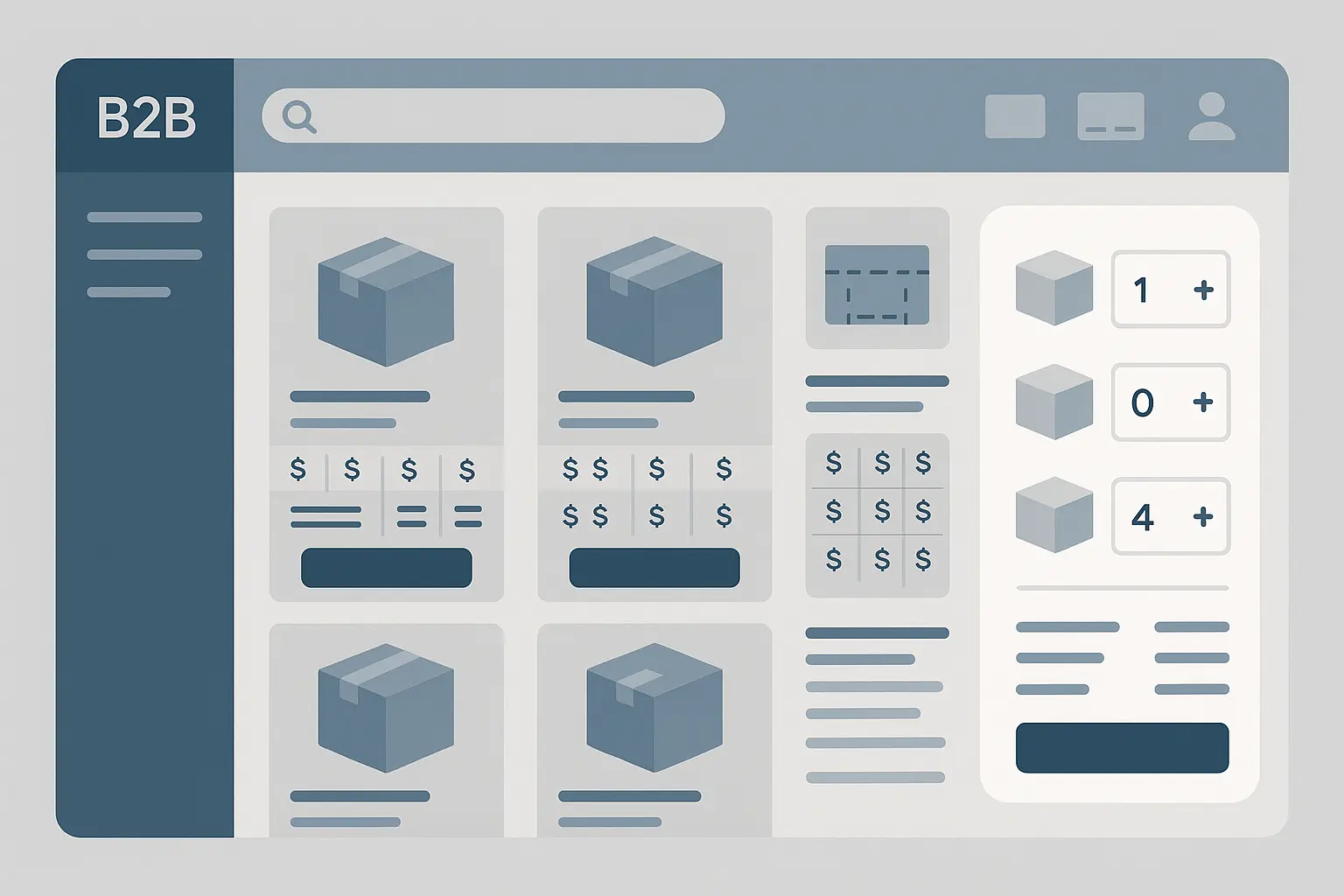
Mobile-First and Omnichannel Migrations: The Customer Experience Winners
Mobile-first and omnichannel migrations prioritize customer experience across all touchpoints, integrating online, mobile, in-store, and social commerce channels into unified shopping experiences that meet modern consumer expectations.
17. Fast Fashion’s Desktop-First to Mobile-First Revolution
Fast fashion customers shop primarily on mobile devices, but this brand’s desktop-first platform was failing mobile users miserably. Their 9-month mobile-first migration delivered transformative results: 85% of traffic now properly optimized for mobile, 50% increase in mobile conversion rates, and 40% improvement in mobile page speed.
The mobile optimization features were comprehensive: touch-optimized navigation, mobile payment integration, social media shopping, and location-based services. The social commerce integration alone drove significant engagement improvements.
Here’s what really stands out – their mobile bounce rate dropped from 68% to 31%. That’s the difference between a mobile site that works and one that actually converts.
18. Home Improvement Omnichannel Integration
Home improvement customers research online but often need in-store expertise. This retailer’s 20-month omnichannel migration integrated online, in-store, and contractor portals with exceptional results: 95% improvement in inventory visibility, 60% increase in buy-online-pickup-in-store adoption, and 45% improvement in customer satisfaction scores.
The contractor network integration created a new revenue stream while providing customers with professional installation services. Plot twist: the contractor portal became their fastest-growing revenue channel within 6 months of launch.
19. Jewelry Chain’s Unified Commerce Platform
Jewelry purchases often involve multiple touchpoints – online research, in-store viewing, and mobile comparisons. This regional chain’s 13-month unified commerce migration delivered impressive results: 80% improvement in customer data accuracy, 55% increase in cross-channel sales, and 70% reduction in inventory discrepancies.
The enhanced personalization across touchpoints created consistent experiences whether customers shopped online, in-store, or through the mobile app. Their sales associates could finally see what customers had been browsing online before they walked into the store.
20. Athletic Wear’s Social Commerce Integration
Athletic wear brands thrive on social proof and influencer partnerships. This brand’s 5-month social commerce migration integrated Instagram and TikTok shopping with remarkable results: 200% increase in social media-driven sales, 65% improvement in influencer collaboration efficiency, and 40% increase in user-generated content.
The social proof integration automatically displayed customer photos and reviews across all shopping channels. And get this – their influencer onboarding process went from weeks to hours.

21. Pharmaceutical High-Security Migration
Prescription medication retail requires the highest security standards. This retailer’s 18-month HIPAA-compliant migration included telemedicine integration with perfect results: 100% HIPAA compliance maintenance, 75% improvement in prescription processing speed, and 50% increase in patient portal adoption.
The telehealth integration created new revenue opportunities while improving patient access to medications. The security audit process was absolutely brutal – they had external security firms testing everything for months.
22. Automotive Complex Catalog Migration
Auto parts retail involves incredibly complex product catalogs with vehicle compatibility requirements. This retailer’s 14-month migration handled 500,000+ parts with impressive results: 90% improvement in part compatibility accuracy, 60% reduction in incorrect orders, and 45% increase in professional mechanic adoption.
The enhanced VIN lookup functionality eliminated guesswork in parts selection – a major pain point for both customers and mechanics. Their return rate for incorrect parts dropped to almost zero.
23. Subscription Box Recurring Payment Migration
Subscription businesses require sophisticated billing and retention features. This gourmet food subscription service’s 8-month migration delivered significant improvements: 40% reduction in subscription churn, 70% improvement in billing accuracy, and 55% increase in subscription customization options.
The enhanced customer retention features included flexible pause options, gift subscriptions, and personalized product recommendations. Their churn rate improvements alone paid for the entire migration within 8 months.
24. Artisan Marketplace Multi-Vendor Migration
Marketplace platforms must serve both buyers and sellers effectively. This artisan marketplace’s 16-month migration managed 5,000+ vendors with excellent results: 120% increase in vendor satisfaction, 65% improvement in commission tracking accuracy, and 50% reduction in dispute resolution time.
The enhanced vendor analytics dashboard provided sellers with actionable insights to improve their performance and earnings. Some vendors saw their sales double just from better understanding their analytics.
25. Fortune 500 Enterprise Complete Overhaul
Enterprise-level migrations involve massive complexity and stakeholder management. This Fortune 500 retailer’s 36-month complete overhaul covered 15 brands, 200+ stores, and international presence with transformative results: $50M+ annual cost savings, 80% improvement in operational efficiency, and 45% increase in customer satisfaction.
The enhanced data analytics and reporting capabilities provided unprecedented visibility into business performance across all channels and markets. The original budget was $25M, and they ended up spending $42M, but the ROI was still incredible.
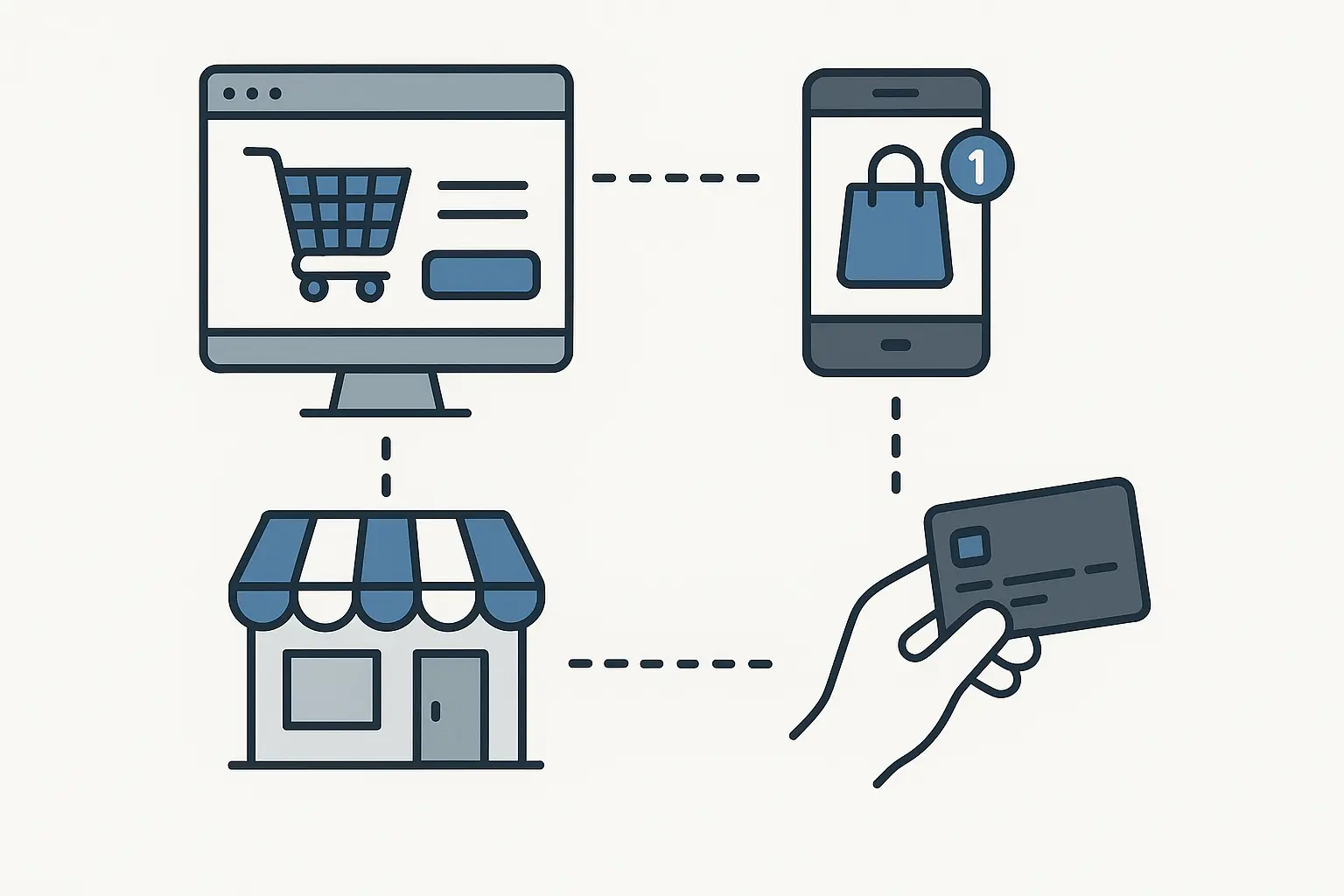
How to Evaluate These Case Studies for Your Business
Look, not every migration approach works for every business. I’ve seen companies try to copy successful case studies without understanding why those strategies worked or whether they applied to their situation. It’s like trying to fit a square peg in a round hole.
Before diving into a migration, it’s essential to establish baseline metrics and projections, which is where tools like our revenue calculator can help you model potential outcomes and set realistic expectations.
| Business Type | Revenue Range | Recommended Case Studies | Key Focus Areas | Timeline Expectation |
|---|---|---|---|---|
| Small-Medium Retailers | $1M-$10M | Cases 1, 3, 9, 17 | Platform simplification, mobile-first, managed hosting | 6-12 months |
| Enterprise Retailers | $50M+ | Cases 5, 11, 18, 25 | Headless architecture, international expansion, omnichannel | 18-36 months |
| B2B/Wholesale | $5M-$100M | Cases 14, 15, 16, 22 | Complex catalogs, integration capabilities, user permissions | 12-24 months |
| High-Growth Scaling | $10M-$50M | Cases 6, 8, 12, 20 | Cloud-native solutions, API-first, rapid expansion | 8-18 months |
Small-medium retailers ($1M-$10M revenue) should focus on case studies 1, 3, 9, and 17. These businesses prioritized platform migrations with proven ROI, mobile-first approaches, and managed hosting solutions for reliability. You don’t need the complexity of headless architecture when you’re still figuring out basic conversion optimization.
Enterprise retailers ($50M+ revenue) should study cases 5, 11, 18, and 25. These businesses invested in headless architecture for flexibility, planned for international expansion capabilities, an
Enterprise retailers ($50M+ revenue) should study cases 5, 11, 18, and 25. These businesses invested in headless architecture for flexibility, planned for international expansion capabilities, and implemented comprehensive omnichannel strategies. The upfront investment pays off when you have the volume and complexity to justify it.
B2B and wholesale operations need to examine cases 14, 15, 16, and 22. These migrations prioritized complex catalog management, integration capabilities with existing systems, and robust user permission and pricing structures. The operational efficiency gains often matter more than pure performance improvements.
High-growth and scaling businesses should analyze cases 6, 8, 12, and 20. These companies chose cloud-native solutions for scalability, implemented API-first architectures, and planned for rapid market expansion capabilities. Building for tomorrow’s growth prevents costly re-migrations.
Why Most Migrations Fail (And How to Avoid It)
The brutal truth? Most website migrations fail to deliver their promised results. I’ve watched businesses spend months and hundreds of thousands of dollars only to end up with a prettier version of the same problems.
The biggest failure point is inadequate pre-migration analysis. Companies jump into migrations without understanding their current performance baselines, customer behavior patterns, or technical debt issues. You can’t improve what you don’t measure, and you can’t measure what you don’t understand.
SEO preservation gets overlooked until it’s too late. I’ve seen businesses lose 50% of their organic traffic because they treated SEO as an afterthought rather than a core migration requirement. The successful case studies all had dedicated SEO strategies from day one.
Proper SEO planning during migrations requires comprehensive auditing, similar to what we outline in our GA4 audit guide, ensuring all tracking and analytics remain intact throughout the transition.
Stakeholder alignment breaks down when expectations aren’t managed properly. Marketing wants more flexibility, IT wants stability, and executives want immediate ROI. Without clear communication and realistic timelines, projects spiral out of control. I’ve been in those meetings where everyone’s talking past each other.
Post-migration optimization is where most businesses drop the ball. They treat the launch as the finish line instead of the starting line. The most successful migrations in our analysis continued optimizing for months after launch, using data to identify and fix issues quickly.
Risk management separates professionals from amateurs. Successful migrations had comprehensive backup plans, staged rollout strategies, and clear rollback procedures. They planned for problems instead of hoping they wouldn’t happen.
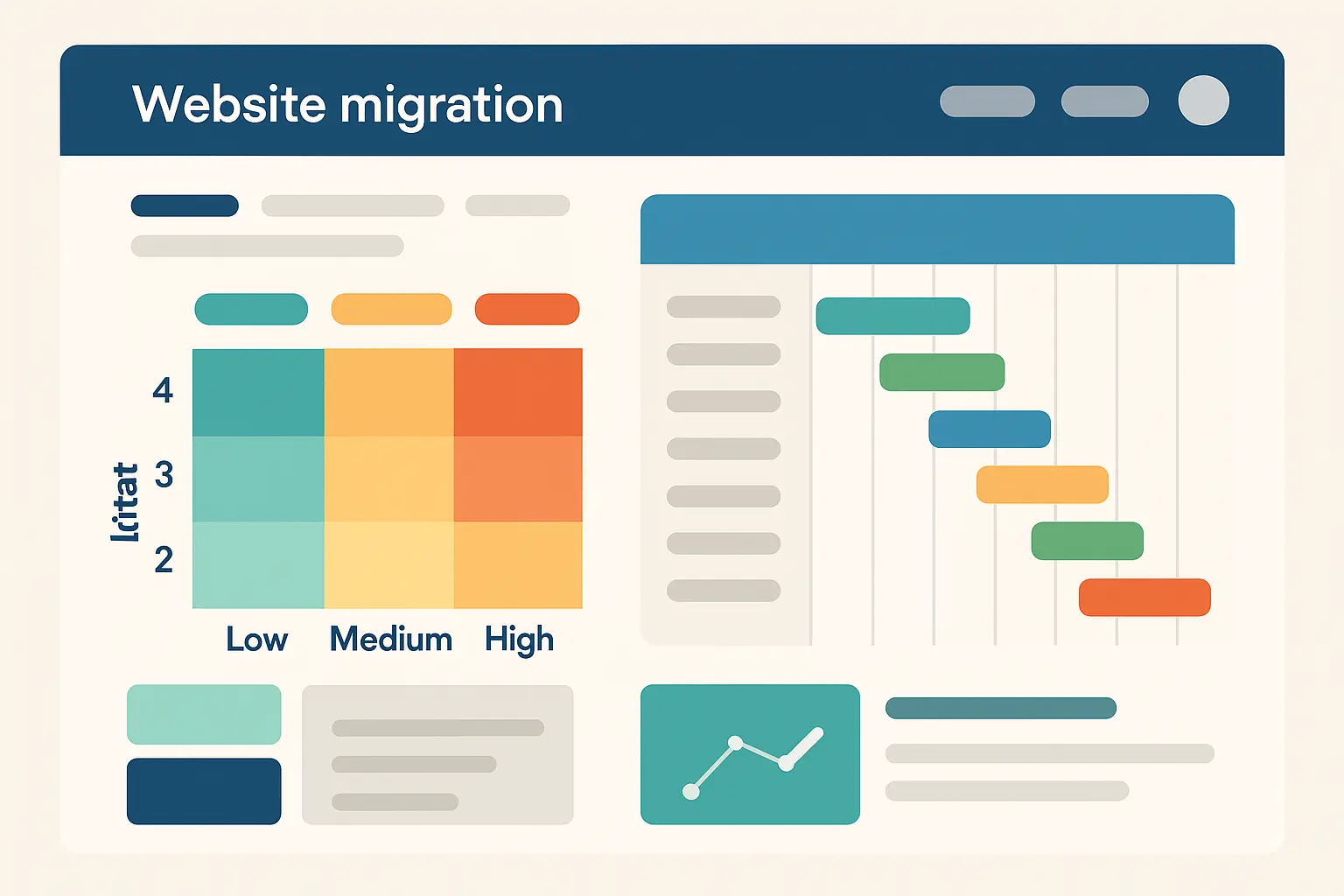
The Marketing Agency’s approach addresses these common failure points through their data-driven methodology. Their pre-migration analysis uses proprietary systems to establish clear performance baselines and identify optimization opportunities. Their integrated service offering ensures SEO, performance, and marketing objectives align throughout the migration process.
Most importantly, they treat migrations as part of a broader digital transformation strategy rather than isolated technical projects. This holistic approach ensures the new platform integrates seamlessly with marketing automation, analytics, and customer management systems while supporting long-term growth objectives.
If you’re considering a website migration, partnering with experienced professionals who understand both the technical and marketing implications can mean the difference between transformative success and expensive disappointment.
Final Thoughts
Look, I’ve been through enough of these migrations to know they’re not just technical projects – they’re basically business surgery. And like any surgery, you better have a damn good surgeon.
The thing that really stands out to me from digging through all these case studies? The companies that absolutely crushed it didn’t just throw money at the problem. They actually did their homework first. I’m talking about the boring stuff – baseline metrics, user behavior analysis, understanding why their current setup was driving everyone crazy.
Here’s what really bugs me about most migration projects I see: businesses treat the launch like it’s graduation day. They pop champagne, pat themselves on the back, and then… crickets. Meanwhile, the smart companies in these case studies? They were just getting started. They spent months after launch tweaking, optimizing, and actually paying attention to what their customers were doing.
And can we talk about SEO for a second? I’ve watched companies tank their organic traffic because they treated SEO like an afterthought. “Oh yeah, we should probably do some redirects or whatever.” No. Just no. Every single successful migration here had someone obsessing over SEO from day one.
The B2B migrations were particularly interesting to me because they’re so different from the flashy consumer stuff everyone talks about. These companies weren’t trying to win design awards – they were solving real operational headaches. Complex pricing, approval workflows, integration nightmares. Not sexy, but absolutely critical.
If you’re sitting there thinking about migrating your site, here’s my advice: don’t copy what worked for someone else just because it sounds cool. That luxury fashion brand’s headless setup? Might be complete overkill for your business. That small retailer’s simple Shopify move? Might not handle your complexity. Start with why you’re actually doing this. Are you trying to handle more traffic? Expand internationally? Fix a terrible mobile experience? Get clear on that first, because it’ll drive every other decision.
And please, for the love of all that’s holy, have a backup plan. The companies that sailed through their migrations weren’t lucky – they were prepared for things to go sideways.
One last thing – if you’re planning a migration and your team is already stretched thin, get help. I’ve seen too many businesses try to DIY these projects and end up with expensive disasters. Sometimes the smartest move is admitting you need professionals who’ve done this before.
The bottom line? These 25 case studies prove that migrations can absolutely transform your business. But they also show that success isn’t guaranteed just because you picked the right platform or hired the right developers. It takes planning, patience, and a willingness to keep optimizing long after everyone thinks you’re “done.”


